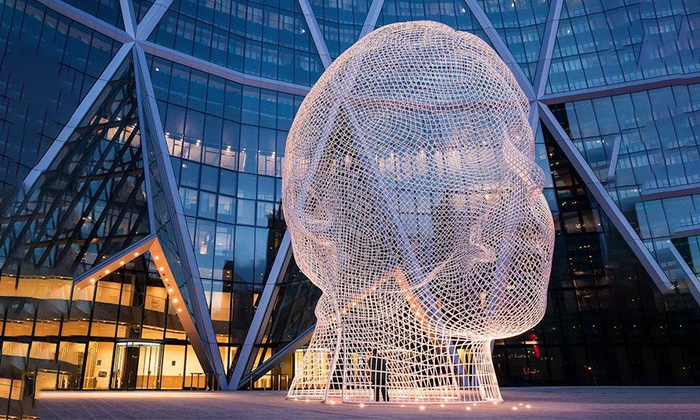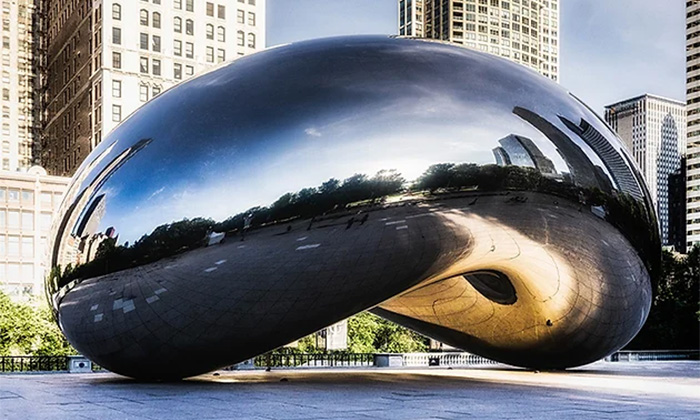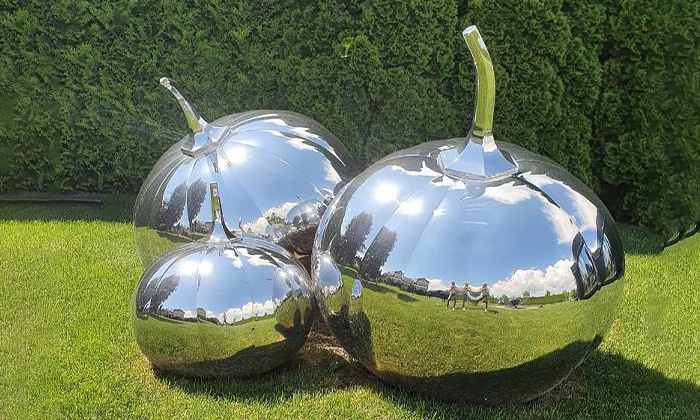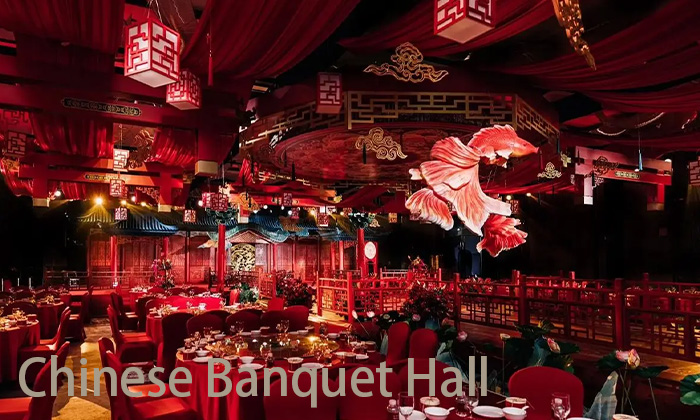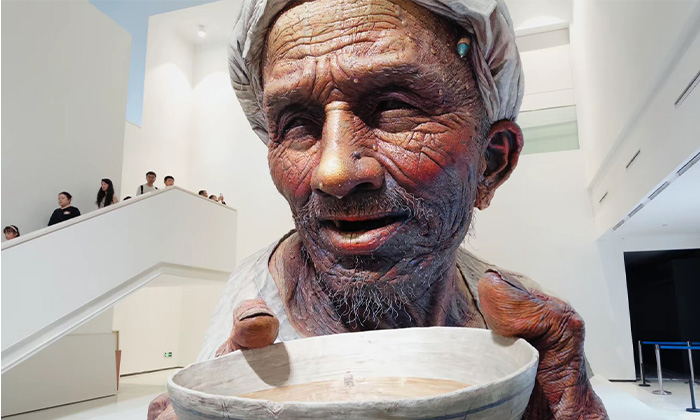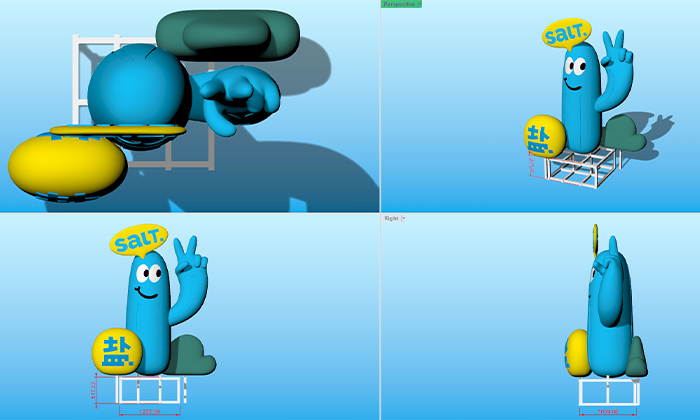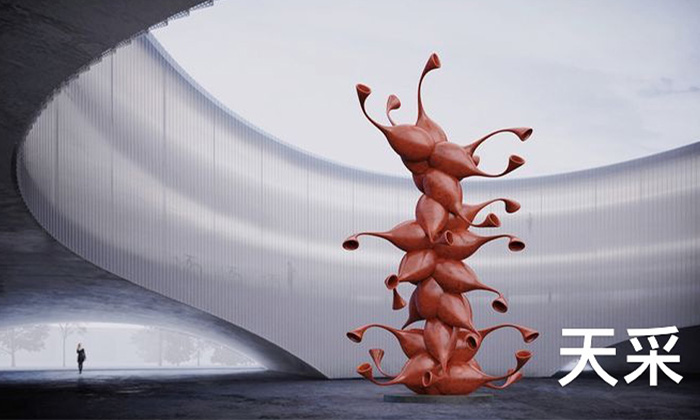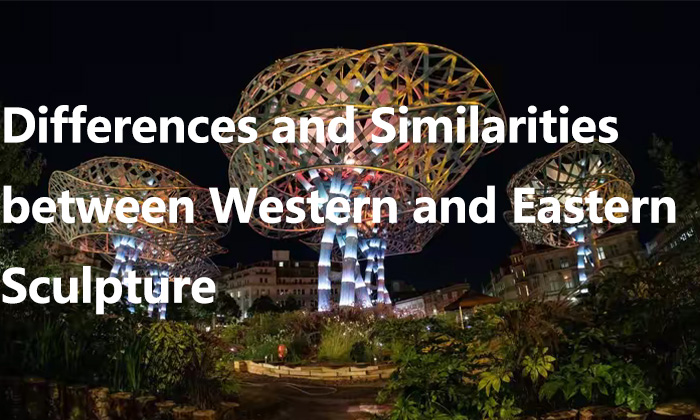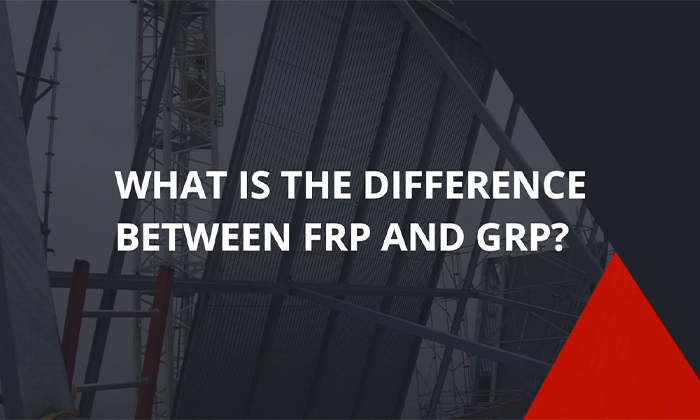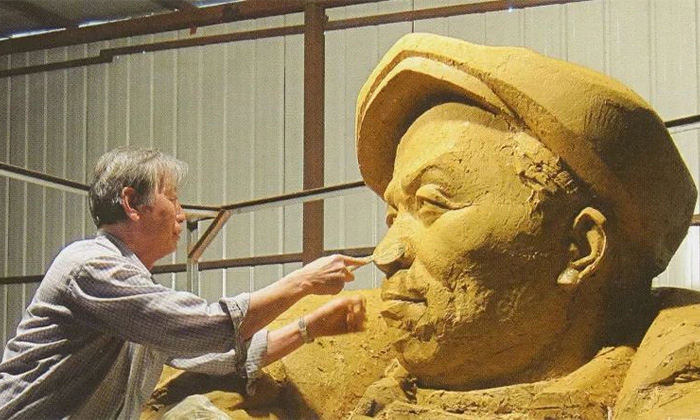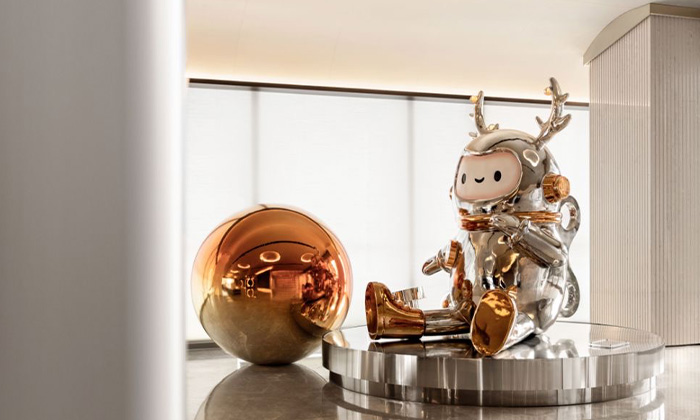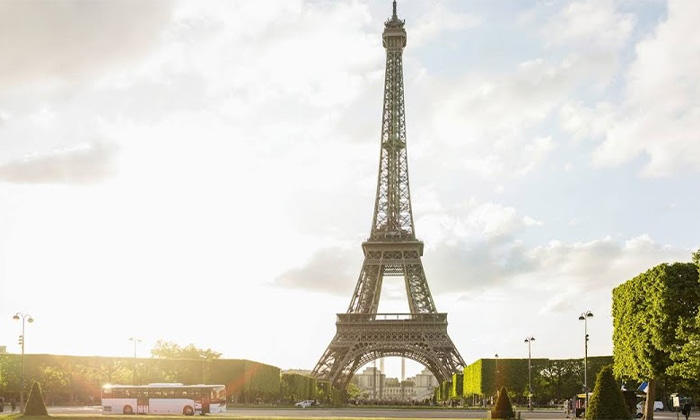 Jun 12, 2024
Jun 12, 2024
Explore the best sculpture parks in France. Towering architecture and pastoral idylls coexist, seamlessly integrating the finest contemporary sculptural works into the natural elements. Sculptures in Nature invites you on a cultural virtual journey through France.
1、Parc de Sculptures de Montmartre
The Montmartre Heights in the north of Paris, France, are renowned as an "artists' quarter". In addition to the famous Sacré-Cœur Basilica and the narrow alleyways favored by painters, the area also boasts a highly distinctive sculpture park.
This sculpture park is located on the hills of Montmartre, covering a vast expanse of land. The park showcases exceptional works by renowned French and international sculptors, with a diverse range of forms and styles. There are modern sculptures characterized by abstract expressionism, traditional sculptures in a classical style, and unique pieces that incorporate Eastern elements.
As you wander through the park, you'll see block stone sculptures standing tall on the lush green lawns, bronze figurative sculptures scattered among the towering trees, and marble bas-reliefs embedded along the winding paths. These sculptures, whether grand and robust or delicate and beautiful, are the essence of the park's allure.
The sculpture park also features various rest areas, where visitors can engage in discussions about art under the shade of the trees or admire the distant green hills from the benches by the lake. On weekends, the park frequently hosts temporary exhibitions and performance events, adding to its vibrant cultural atmosphere.
2、Château de Lacoste, France
Château de Lacoste is located in the village of Oppède-le-Vieux in the Provence region of France, and is a unique artistic complex that combines architecture, art, and the wine industry.
The castle was originally built in the 11th century and has undergone multiple reconstructions and expansions over the centuries, evolving into a distinctive destination that encompasses art, architecture, and wine culture. The castle's architectural style is elegantly ornate, and it has been transformed by renowned modern architects like Norman Foster to seamlessly blend with the surrounding natural landscape.
Both the interior and exterior of the castle showcase numerous works of contemporary art, including outstanding pieces by famous artists such as Richard Serra and Walter De Maria. The estate also features a winery, where visitors can sample the high-quality wines produced by the local vintners.
Château de Lacoste is a truly unique destination that offers a harmonious fusion of art, architecture, and wine culture, attracting art enthusiasts and wine connoisseurs alike. A visit here not only allows you to appreciate the impressive artistic works, but also to immerse yourself in the distinct cultural charm of the Provence region.
3、Domaine de Mômes, France
Domaine de Mômes is an open-air sculpture park nestled between the Maures and Estérel mountain ranges. Mediterranean pine forests stretch for miles; hidden glittering ponds, secret valleys, and extraordinary natural vistas abound. Domaine de Mômes now hosts around 40 contemporary works, created by artists from diverse artistic, cultural, and generational backgrounds.
4、Gimmel Sculpture Park
Gimmel Sculpture Park is located in the town of Gimmel on the western coast of Brittany, France, and is an open-air art park focused on contemporary sculptural works. The park was established in the 1990s with the aim of showcasing masterpieces by renowned sculptors from around the world.
The park's collection includes sculptures of various forms and materials, such as bronze, marble, wood, and metal, spanning a range of artistic styles including abstraction, modernism, and naturalism. The most famous piece is the towering 12-meter-tall bronze sculpture "Mother and Child" by French sculptor Nicolas Schöffer, which stands as an impressive and monumental work
5、Manoir de Melan
Manoir de Melan is located in the northern coastal region of the Brittany peninsula in France, and was built in the early 18th century. It is a historic estate that combines architecture, horticulture, and art.
The manor adopts a typical French classical architectural style, with a main house, ancillary buildings, greenhouses, and cellars. The main house is opulent and magnificent in appearance, with exquisite interior furnishings. The estate also features meticulously manicured French-style gardens, home to a variety of rare plant species.
In addition to its architecture and horticulture, Manoir de Melan is renowned for its rich art collection. It houses a vast array of 18th to 20th century paintings, sculptures, and furniture, reflecting the aesthetic tastes of the upper classes at the time. Visitors can admire works spanning from Classicism to Impressionism, representing a diverse range of artistic movements.
6、The Rodin Museum Sculpture Garden
Can't escape Paris in the summer? Then the Rodin Sculpture Garden may be just the place for you. Spanning three hectares, the garden is composed of rose gardens, ornamental gardens, and leisure areas. In 1908, Rodin decided to showcase some of his works and personal collections in this somewhat haphazard but much-beloved garden. Visitors can now stroll through the garden, admiring the rare natural scenery of Paris and Rodin's ubiquitous sculptures. One of Rodin's most famous works, "The Thinker", is also on display, allowing audiences to truly marvel at the magnificent fusion of nature and ancient civilization.
7、The Sculpture Garden at the Pompidou Center
The Pompidou Center, located in the heart of Paris, is a world-renowned temple of modern art. Atop the center's building lies a 2.5-hectare sculpture garden, which showcases a collection of renowned 20th century and contemporary sculptural masterpieces.
This sculpture garden seamlessly integrates artistic and natural elements, with a carefully curated arrangement of diverse sculptural forms. Some are figurative, such as human statues, while others are abstract, embodying various geometric shapes. The materials used also vary greatly, ranging from metals and wood to glass and ceramics.
As visitors stroll through the garden, they can admire these awe-inspiring modern sculptural works and experience the perfect fusion of art and nature. At the same time, the garden offers a panoramic view of the entire Paris cityscape, surrounded by lush greenery and fresh air, imbuing the art appreciation experience with a sense of tranquility and poise.
8、The Sculpture Garden of the Palace of Versailles
The Palace of Versailles, located in the suburbs of Paris, is a renowned French royal palace and a UNESCO World Heritage site. In addition to the grand architecture, the Palace of Versailles also boasts a beautifully manicured royal garden, which includes a famous sculpture garden.
This sculpture garden is situated in the southwest part of the Palace of Versailles, covering a vast expanse of land. It features a diverse collection of 19th and 20th century sculptural works, Human sculpture, animal sculptures, and abstract pieces. These works were created by renowned sculptors of the time, showcasing the evolving artistic styles across different eras.
Beyond the sculptures, the entire garden seamlessly integrates water features, with fountains and ponds dotting the landscape. These water elements complement the sculptural works, creating an elegant and captivating artistic landscape.
